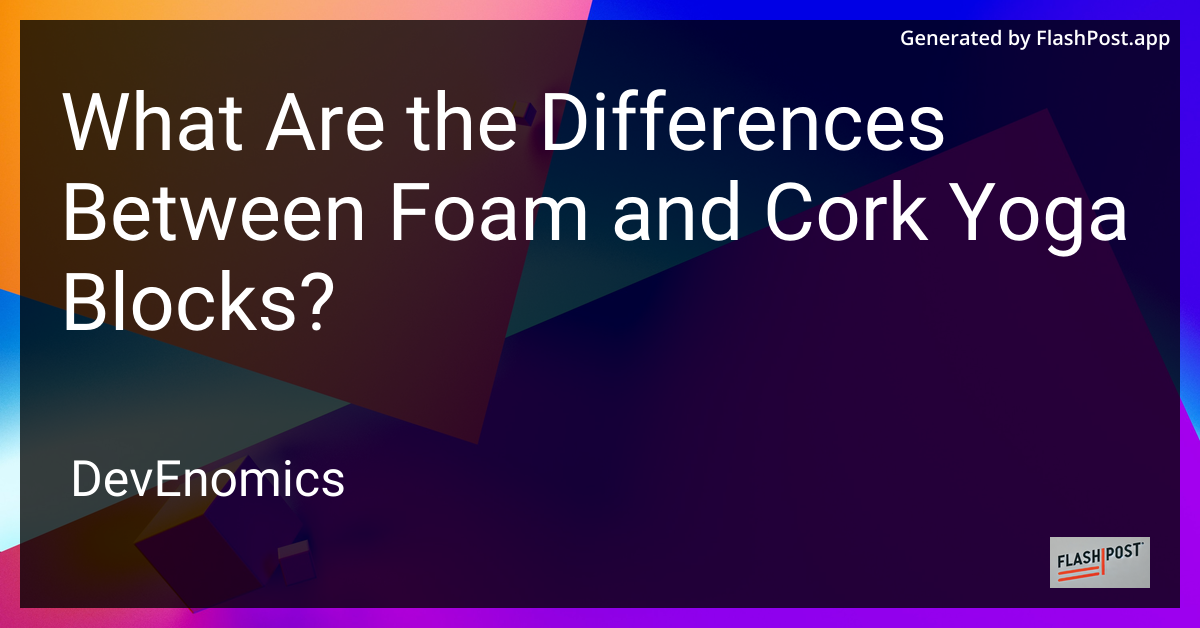

What Are the Differences Between Foam and Cork Yoga Blocks?
Yoga blocks are essential accessories that can enhance your practice by providing support and stability during various poses. Foam and cork are the two most common materials for yoga blocks, and each has distinct characteristics that cater to different preferences and needs. In this article, we explore the differences between foam and cork yoga blocks, helping you make an informed choice.
What Are Yoga Blocks Used For?
Before diving into the specifics of foam and cork yoga blocks, it’s important to understand their purpose. Yoga blocks are versatile props that assist with alignment, balance, and flexibility. They are particularly beneficial for beginners or those working on increasing their range of motion.
Foam Yoga Blocks
Lightweight and Affordable
Foam yoga blocks are known for being lightweight and budget-friendly, making them an ideal choice for beginners. They are easy to carry around, which is advantageous for those attending classes or traveling.
Soft and Comfortable
The soft texture of foam blocks provides cushioning and comfort, reducing strain on the wrists and knees. They are particularly useful for restorative yoga practices or poses that require extended support.
Versatile and Easy to Clean
Foam blocks are versatile and suitable for a variety of yoga styles. Additionally, they are easy to clean with a simple wipe down, making them low-maintenance. However, they may wear out faster over time due to their softer nature.
Cork Yoga Blocks
Durable and Eco-Friendly
Cork yoga blocks, made from the bark of cork oak trees, are durable and eco-friendly. They provide a sturdy and solid base, offering excellent support for more advanced poses or practitioners who need extra grounding.
Slip-Resistant Surface
One of the key benefits of cork blocks is their slip-resistant surface. This feature becomes especially significant during sweaty or intense practice sessions, where traction is crucial to maintain balance.
Heavier but Stable
Cork blocks are heavier than foam blocks, which contributes to their stability. While this added weight makes them less portable, it enhances their ability to provide a reliable base during challenging poses.
Which Yoga Block Is Right for You?
Choosing between foam and cork yoga blocks depends on your individual needs and goals in your yoga practice. Beginners might appreciate the affordability and comfort of foam blocks, while more experienced practitioners might prioritize the durability and stability offered by cork blocks.
For more information on selecting the right yoga accessories, check out our other articles on what features you should look for in a yoga mat for beginners and what material is best for a yoga wheel in 2025.
Enhance Your Practice
Incorporating yoga blocks into your practice can significantly benefit your flexibility and alignment. Additionally, if you’re looking to explore yoga as a tool for health, you can read about yoga poses that help with constipation.
Both foam and cork yoga blocks have their unique advantages, and understanding these differences can help guide your choice based on your personal practice and preferences.
This SEO-optimized article effectively utilizes keywords such as "yoga blocks," "foam yoga blocks," and "cork yoga blocks," while integrating links to other relevant content for further reading.